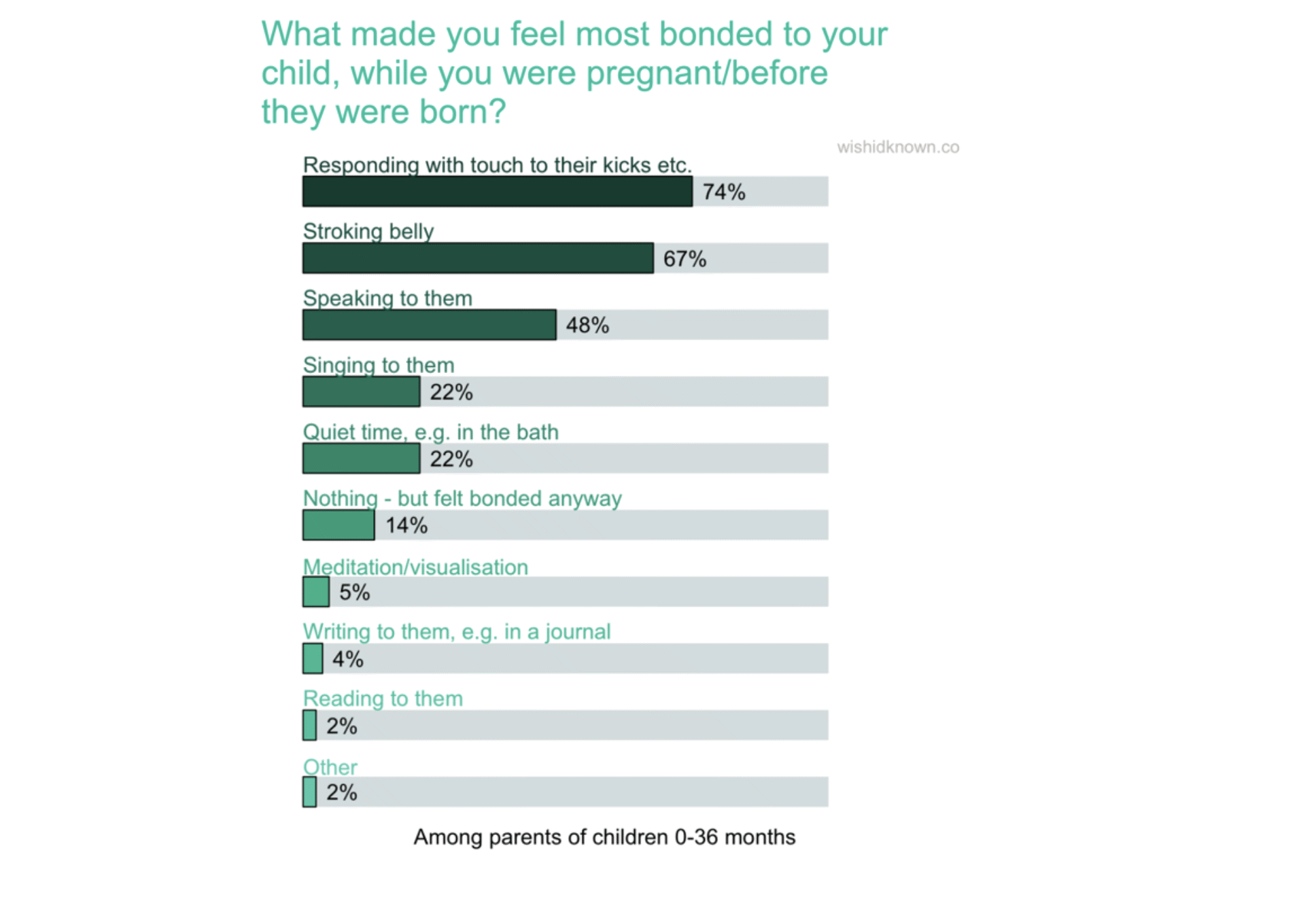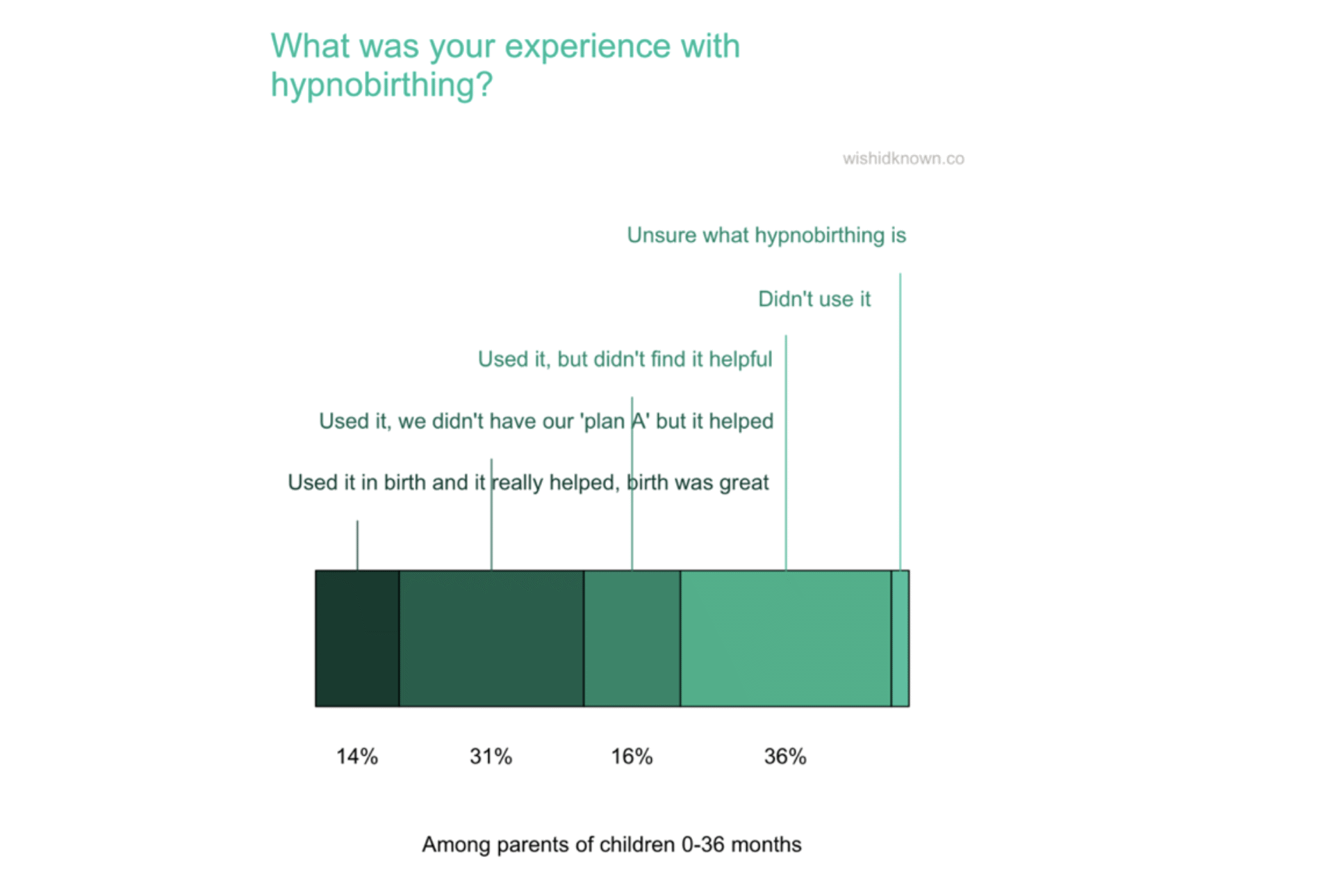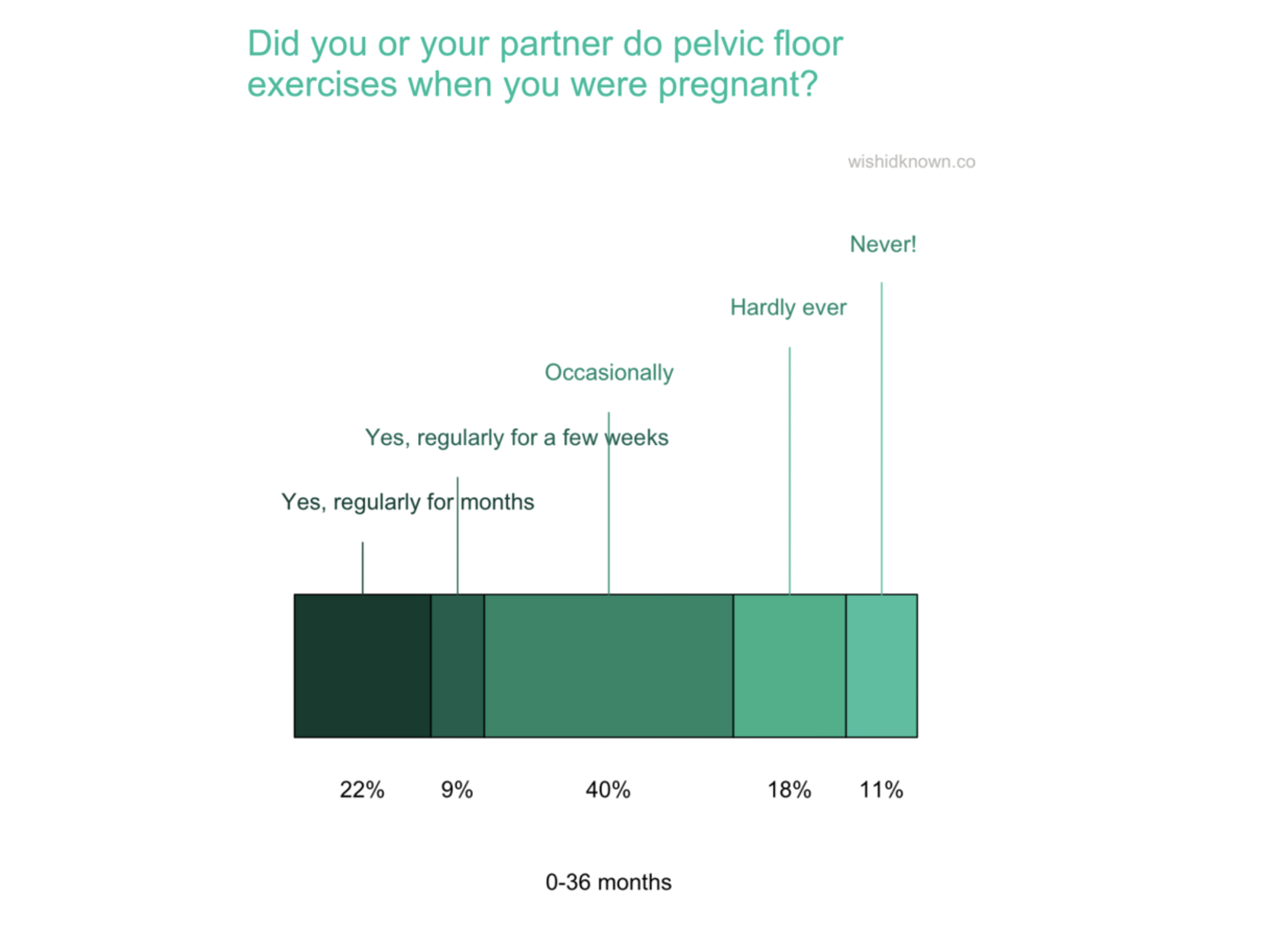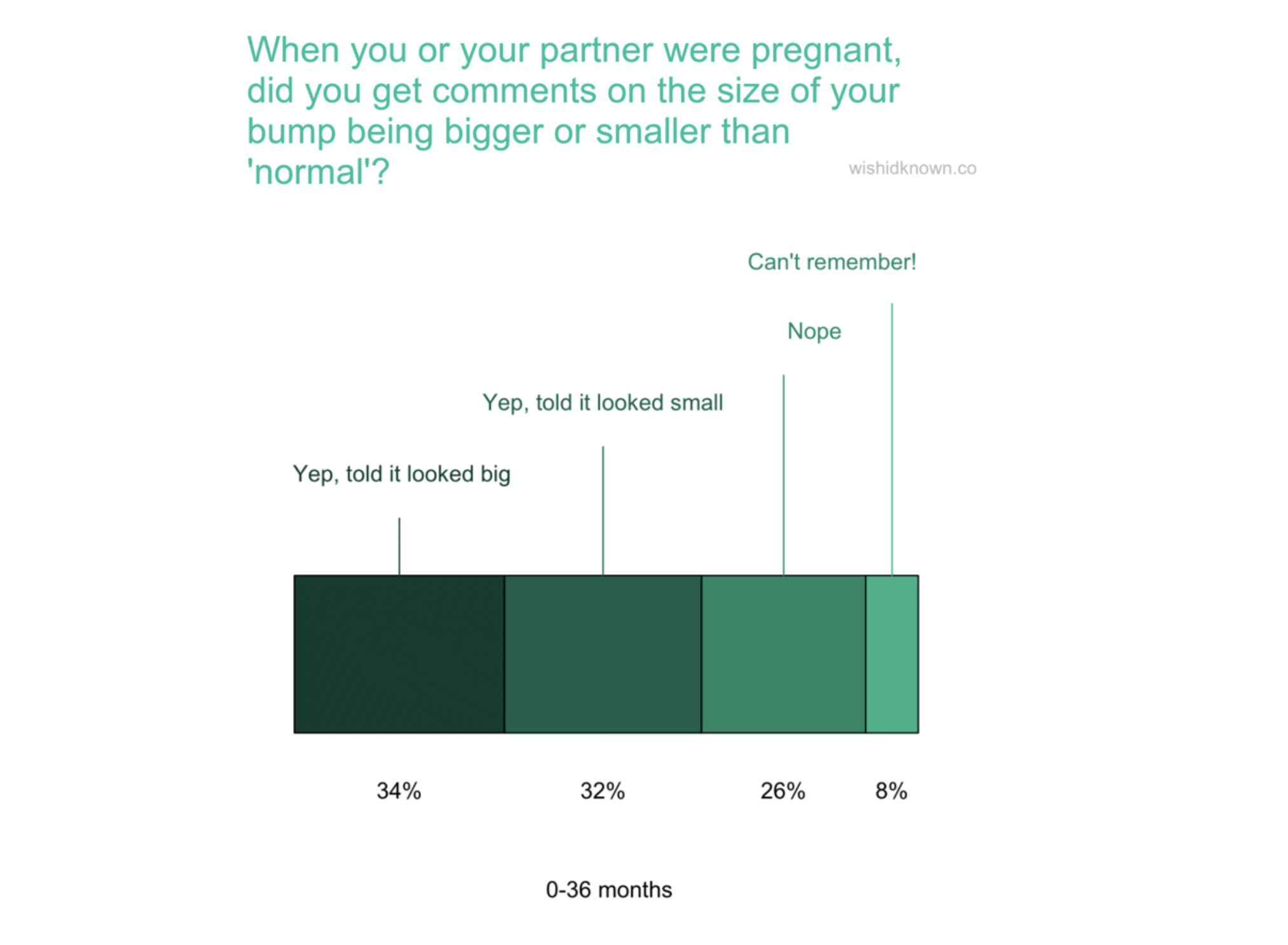The second trimester often brings a sigh of relief and the buzz of growing excitement. You're hopefully feeling more yourself and yet, on the brink of significant change.
At Wish I'd Known, we crowdsource real experiences weekly – and anonymously – from a large group of parents of 0–3-year-olds. Parents then see what the rest of the community is doing, feeling and experiencing. We cover a broad range of everyday topics, from toys to tantrums and milestones to mental health. And given the journey of parenthood begins well before a baby arrives in this world, we cover a lot on pregnancy too.
Click here to learn more about the Wish I'd Known community!
Here is some second-trimester wisdom we’ve gathered from our community:
Embrace preloved treasures
We found about half of parents look back and wish they'd opted for more second-hand items. Whether it’s baby gear or maternity wear, the second trimester is a good time to start collecting those gently used must-haves that come with seasoned love and a friendlier price tag. (Remember that certain items such as second-hand car seats should be avoided, as there is a chance that the safety of the seat could be affected without any physical signs).
Top ways to bond with your bump
Feeling that bond with your little one even before they're born is such a special experience. Most parents (around 3 in 4) felt most connected to their unborn child when they responded with touch to their kicks. Stroking the belly was also a popular bonding activity, with about 2 in 3 parents cherishing this simple, loving gesture. Speaking to the baby bump and enjoying quiet moments, such as during a bath, were other ways parents felt close to their soon-to-be newborns.
If you didn't feel a bond during pregnancy, that’s perfectly okay and it doesn't define your parenting journey. Bonding is a process that unfolds differently for everyone. 
To hypnobirth or not?
For those new to hypnobirthing, it can be described as a birth preparation method that includes self-hypnosis, relaxation, and visualization techniques to help a person feel physically, mentally, and spiritually prepared and reduce their awareness of fear, anxiety, and pain during birth.
When we asked our community about it, we found a mixed bag of experiences. Roughly 1 in 3 parents found it useful even when their 'Plan A' didn't pan out, while about the same proportion didn't use it at all. A smaller group, around 1 in 7, reported that hypnobirthing really helped and made their birth experience great.
However, it didn't click with everyone. About 1 in 6 parents tried it but didn't find it helpful. And let's not forget a tiny group who were unsure what hypnobirthing is. So, if you're considering hypnobirthing, remember that everyone's experience is different. It might be a game-changer for you, or it may not be your cup of tea - and that's okay.
On the results, doula Jessica from @positively_pregnant_uk shared her perspective with us:
“An important part of doing a hypnobirthing course is to find your own inner wisdom in choosing the path that feels right for YOU in birth.
It’s not about having a birth that looks ‘calm’ and ‘serene’ and simply doing some breathing techniques… a good course will go so much deeper than that in helping you to feel in control and clued up ahead of giving birth!”
Wondering whether others are forgetting their pelvic floor exercises as often as you? You’re not alone
Pelvic floor exercises during pregnancy can be easily forgotten in the whirlwind of expecting a new baby. We found a good chunk of parents across all age groups did occasionally engage with these exercises. However, less than a quarter of parents committed to doing them regularly for months, and a sizeable number didn't do them at all.
Pelvic health physio Clare from @clarebournephysio shared these tips with us on the results:
"It is great to see about 30% did/do pelvic floor exercises regularly during pregnancy. We know there are so many benefits from research, including reducing the risk of experiencing urinary incontinence at the end of pregnancy or postpartum.
However, that means 70% are only occasionally or not doing pelvic floor exercises during pregnancy. This is usually because we are not informed about the benefits or educated correctly on how to do them. It is normal not to be motivated to do something if you don't know how to do them correctly. We all have limited time, so we only want to invest in what we know will actually be effective. Seeing a pelvic health physiotherapist can help you to learn how to do pelvic floor exercises, but I will walk you through it now:
- To connect with your pelvic floor, first think about squeezing your anus, as if you are holding in wind, then think about this squeeze coming forwards to the pubic bone. Then fully relax this contraction and repeat this x10 times.
- You can then try some where you hold the contraction. Contract and hold for up to 10 seconds, whilst breathing in and out normally, then relax and repeat x10 times.
- Start doing these once a day and then see if you can build up to three times a day.
It can be really hard to remember to do them, but there is a great NHS app called the Squeezy App that sends you reminders. The main thing is to focus on quality over quantity initially."
Getting bump-size comments? Take them with a pinch of salt
We found a whopping two-thirds of parents were told their bump looked either big or small. So, it's clear that everyone's got an opinion, and they're not afraid to share it! We were also told by a member of the community that they'd had comments both ways - that their bump looked bigger and smaller than 'normal' 🤦🏻♀️ 
Our mission at Wish I’d Known is to reassure parents and normalise parenting ups and downs. We hope these insights from our community offer comfort and camaraderie.
If you're curious to see more from our free community and add your voice, we’d love it if you joined us!





